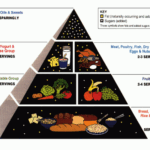How to Automatically Turn On Data For MMS
MMS messages are used to send text, images, video and audio to friends and family. It is important to note that MMS messages must use data on your mobile network and are often sent via Wi-Fi.
MMS settings vary by operating system and device, but are typically found in APN settings under the Mobile Network settings menu. You can also change settings to hide the recipient’s number or request a reply from the message sender.
1. Go to Settings
MMS (Multimedia Messaging Service) is a type of text messaging that allows you to send messages with photos, video, audio, and GIFs. Unlike SMS, MMS requires a data connection to receive messages. Using MMS for your text marketing can make it easier to engage your audience and get your message out. However, there are some things to keep in mind before you start sending MMS messages.
First, MMS messages are more expensive than SMS messages. In addition, not everyone will be able to receive MMS messages. This is because not all phones are smartphones, and some phone plans don’t include MMS messaging. Also, MMS is more likely to eat up your mobile data than SMS messages.
To enable MMS on your phone, you need to go to the settings and turn it on. Then, you need to ensure that your phone is connected to a Wi-Fi network or the amaysim mobile network. Then, you can open the Messages app and tap the three dots in the top-right corner to check if your MMS messages are automatically downloading.
If you have turned on MMS and your messages are not automatically downloading, it may be because the auto-download setting is off. To change this, you need to go to your Android’s settings and tap Wireless and networks. Then, you should find the option called More networks or Mobile networks and tap the icon with an arrow to the right of it.
2. Networks
MMS is a standard way to send and receive multimedia content on mobile phones over a cellular network. It extends the core SMS (Short Message Service) capability to allow the transmission of text messages with more than 160 characters and a variety of media, including up to forty seconds of video, one image, or a slideshow of multiple images.
MMS messages are encoded on the sending device and then sent to the MMSC (Multimedia Messaging Service Center) of the recipient’s carrier. The MMSC then delivers the MMS to the receiving device, or forwards it to the appropriate application.
The advantage of MMS over SMS is that it can support two-way messaging, allowing for more engagement and deeper interactions with your members. For example, when you send picture proof of delivery to a customer, they can respond immediately with a question, or tell the driver it looks like the wrong location. This helps reduce friction and improve overall customer satisfaction.
However, sending and receiving MMS messages requires a data connection on your smartphone. Hence, it is important to have a good and affordable data plan if you are using MMS messaging on your phone. You can use a data manager app to manage your mobile data usage. This is especially helpful if you are travelling abroad. The apps can help you track your data usage and alert you when you are approaching the limit.
3. Data
MMS (Multimedia Messaging Service) allows a user to send or receive messages with multimedia content over a mobile network. This includes text messages that contain pictures, video or audio files. It extends the core SMS capability by allowing messages to be more than 160 characters in length.
MMS is much more engaging to contacts than a simple text message in the right use case. However, it also requires more data to be sent. This makes it more expensive for marketers to use compared to SMS. MMS is a popular messaging platform used by brands to deliver customer support, promotions, and marketing messages.
The MMS API from Plivo enables you to send and receive MMS with your long code or toll-free phone numbers. You can send multimedia messages that include pictures, emojis, video, and audio. The API intelligently resizes the content to make sure that it can be delivered with the carrier’s MMS standard without violating their file size restrictions.
It is important to note that MMS messaging uses data and not Wi-Fi. So if you are trying to use MMS on your cell phone, you will need to enable mobile data or disable Wi-Fi. This is done to ensure that only the MMS messaging app is using your cellular data. You can then turn off mobile data after sending or receiving an MMS message to avoid any charges.
4. Mobile Networks
Mobile networks, also known as cellular networks, rely on wireless technology to transmit signals over large distances. Most mobile communication devices – such as phones and tablets – can connect to these networks, which are effectively a web of what’s called base stations. Each covers a small geographical area, or cell, and transmits digital information in one or more specific radio frequencies.
Cellular network technologies are rapidly evolving, enabling progressively faster transmissions over ever-larger bandwidths. The current generation of cellular networks, including 4G LTE (Long Term Evolution) and 5G-NR and mm wave, support data speeds in excess of 100 megabits per second.
As mobile communication demands have increased, many providers offer a range of pricing options – prepaid or contract – and provide coverage in a broad geographic area. Some offer unlimited monthly service, while others may charge a flat monthly fee or allow bring-your-own-phone (BYOP) arrangements.
In addition, a growing number of mobile carriers now allow MMS to be sent and received over WiFi. You can enable MMS over Wifi by enabling the “Send and receive MMS over wifi” option in your device’s settings. You’ll find this in the Advanced options or Developer options (see here for instructions on how to enter developer mode). Note that if you turn this setting on, mobile data will always be active.







